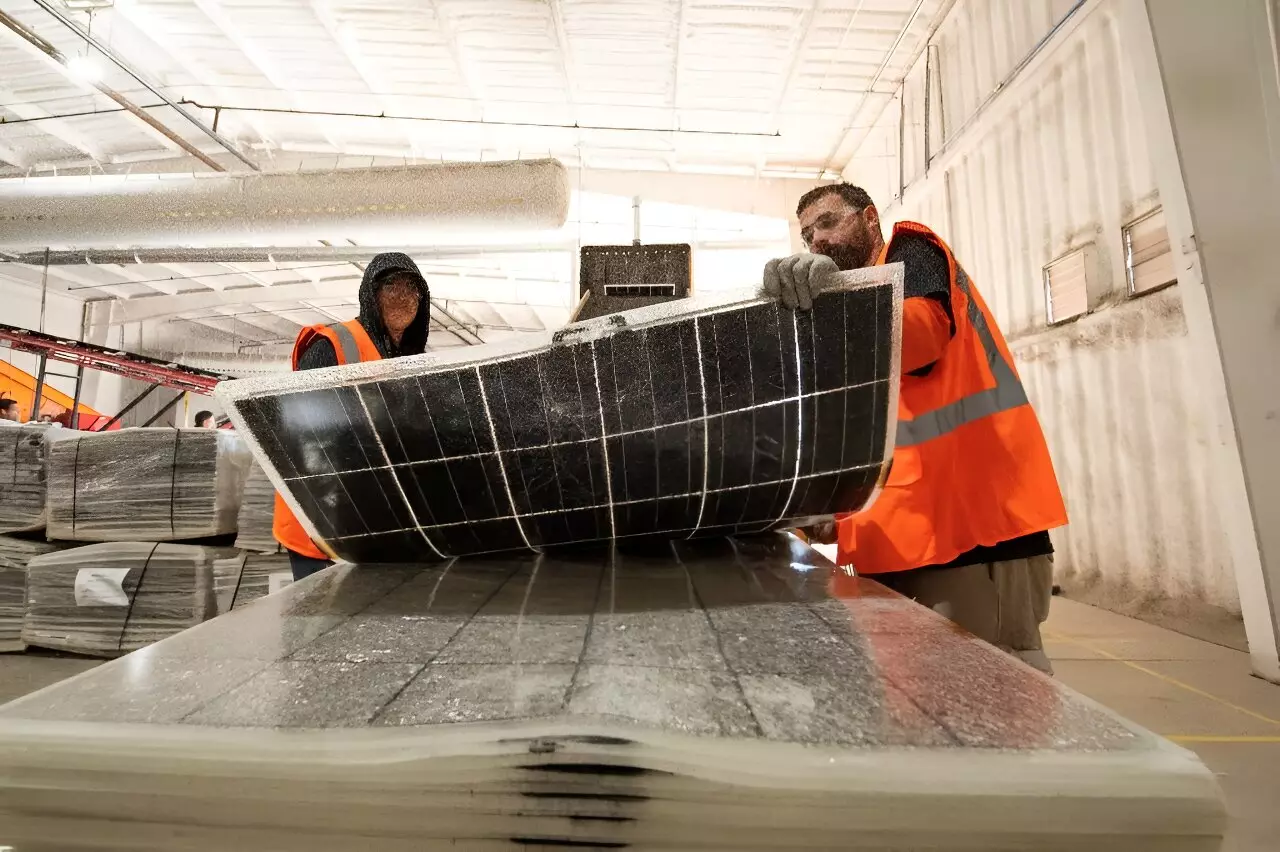As the world makes a shift from fossil fuels to renewable energy, a new issue arises: what to do with old or worn-out solar panels. With the increasing installation of photovoltaic slabs in the United States, particularly in sunny regions like the west and south, the lifespan of these panels is becoming a concern. While solar panels have an expected lifespan of around 30 years, the first wave of installations is now reaching the end of their usefulness, creating a need for effective recycling strategies. The lack of planning for a circular economy in the solar industry is becoming evident, and it is crucial to find solutions for the retirement of these assets.
One potential solution is to reuse and refurbish panels. Up to five percent of panels have minor defects or get damaged during transport or installation, but are still in working condition. These panels can be refurbished and redirected to other markets, often overseas. However, for the panels that can no longer function, including those damaged beyond repair or smashed by hailstones, valuable materials can still be recovered. This process, known as urban mining, can extract silver, copper, aluminum, glass, and silicone from the panels. These commodities hold value on the open market and can be repurposed for various applications.
While the uses for metals like silver, copper, and aluminum are well-known, finding alternative applications for silicone and glass presents an intriguing challenge. Silicone and glass recovered from old solar panels can be utilized for sand traps on golf courses, refined for sandblast mix, or used in the production of stones or glass mixtures for outdoor fireplaces. This creative use of recycled materials not only reduces waste but also finds new purposes for components of solar panels that would otherwise end up in landfills. It is a testament to the potential for innovation in sustainability.
Developing an efficient lifecycle for solar panels is crucial for the future of renewable energy infrastructure. With the United States committed to reducing reliance on fossil fuels, the installation of solar panels is expected to increase significantly over the next two decades. However, the issue of recycling remains a challenge. Not only can the value of recovered materials be relatively low, but the logistics of recycling panels can also be costly. Panels are often distributed across numerous rooftops, sometimes in remote locations, making transportation to recycling centers expensive. Additionally, unlike some countries, the United States places the cost of removal and recycling on the end user, leading many households to opt for landfill disposal instead.
To bridge the gap between the cost of recycling and what consumers are willing to pay, policy support is necessary. Consumers need incentives to properly dispose of old solar panels rather than dumping them at landfills. Currently, the cost of recycling falls on the end user, which discourages many from pursuing recycling options. There is a need for policies that promote responsible recycling and ensure that the total lifecycle cost of solar panels is accounted for. Only with policy support can recycling become a more financially viable and environmentally friendly option.
While the cost and labor-intensive nature of recycling may deter some businesses from venturing into this industry, there is a way forward. The recycling process can recover materials that can be directly incorporated into the production of new solar panels, creating a circular supply chain. As the solar industry continues to grow, the demand for raw materials will increase, making the recycling of old panels both economically and environmentally beneficial. By embracing recycling and incorporating recovered materials back into the supply chain, the solar industry can become more sustainable and contribute to a greener future.


Leave a Reply